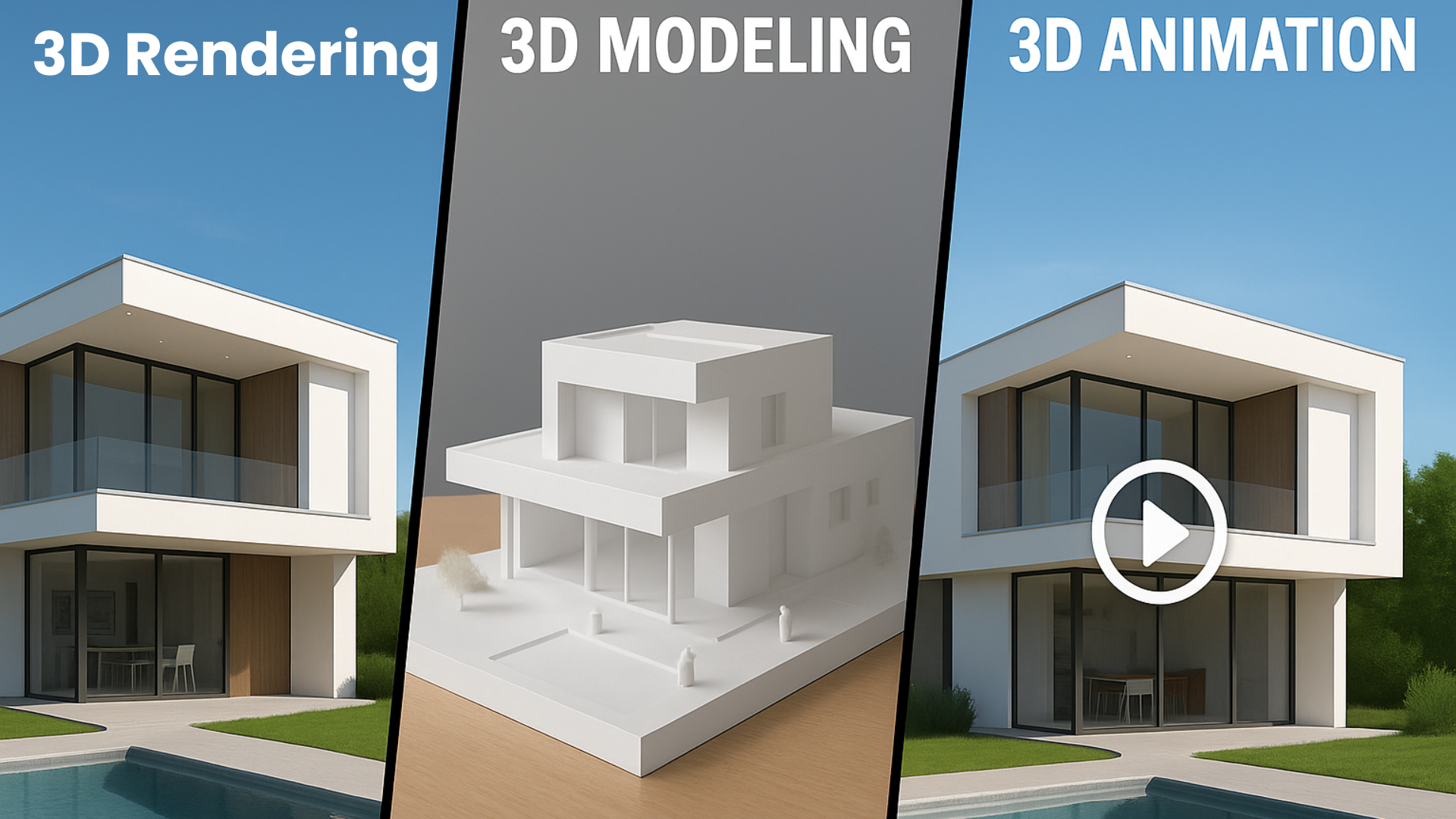
In real estate and architectural design, visuals do more than decorate a presentation; they shape decisions. In an era where clients expect to “see” a space before it exists, technologies like 3D rendering, 3D modeling, and 3D animation have become essential.
These three processes are often mentioned together, but they serve different purposes. Understanding how they work and how they complement each other can help developers, architects, and marketers communicate ideas with precision and impact. At Mayabious Group, we work with real estate brands to ensure each stage of visualization supports their design and business goals.
3D modeling is the starting point for any visual representation. Think of it as building the skeleton of your project in a virtual environment. Using specialized software, every wall, column, staircase, or landscaped detail is recreated in accurate proportions and dimensions.
Example scenario:
A high-rise apartment project begins with detailed 3D models of individual units and shared amenities. These models help the design team spot functional issues early, long before physical work begins.
At Mayabious Group, accurate modeling forms the base for every visualization project, ensuring every render or animation that follows is both beautiful and structurally sound.
Once the model is ready, the next step is to make it visually compelling. 3D rendering adds color, texture, lighting, and atmosphere, transforming a wireframe into an image that feels tangible.
Example scenario:
A developer marketing a luxury villa might present a daytime render bathed in natural light, and another at sunset to highlight mood and ambiance. Both come from the same model but tell different emotional stories.
With our real estate marketing experience, we know that the right rendering style can make the difference between a potential buyer scrolling past or stopping to imagine themselves in the space.
If a 3D render is a photograph, a 3D animation is a film. Animation creates movement — guiding viewers through spaces, showing how different areas connect, and highlighting features that static images can’t capture.
Example scenario:
A commercial office complex animation could start with a sweeping aerial view, move through the lobby, highlight workspaces, and end at a landscaped rooftop café giving prospective tenants a clear sense of the environment’s character.
Animations tell a story, and in real estate marketing, stories sell. At Mayabious Group, our animations blend architectural accuracy with cinematic storytelling to engage buyers from the first frame.
While each process is distinct, they are most effective when used together:
A large-scale residential launch, for instance, might use:
This combination ensures accuracy, consistency, and impact across all visual touchpoints — something our team delivers for clients across residential, commercial, and mixed-use developments.
Different project stages benefit from different visualization tools:
Understanding this progression means you can invest in the right asset at the right time, maximizing both creative and commercial returns.
These visualization processes aren’t just about “making things look pretty.” In real estate, they can:
Whether used for a boutique villa or a large urban development, these processes bridge the gap between concept and reality, making communication smoother for all stakeholders.
3D rendering, modeling and animation each play a unique role in shaping how real estate projects are understood, marketed, and experienced. By knowing the differences and how they work together, developers and architects can make smarter choices about how to present their vision.
In a market where attention is scarce and expectations are high, clear, high-quality visualization isn’t just a design luxury, it’s a business necessity.
At Mayabious Group, we help real estate brands bring their projects to life through tailored 3D visualization solutions from precise modeling to photorealistic rendering and immersive animations. If you’re looking to showcase your project with clarity, impact, and creativity, our team is here to transform your ideas into visuals that inspire action.